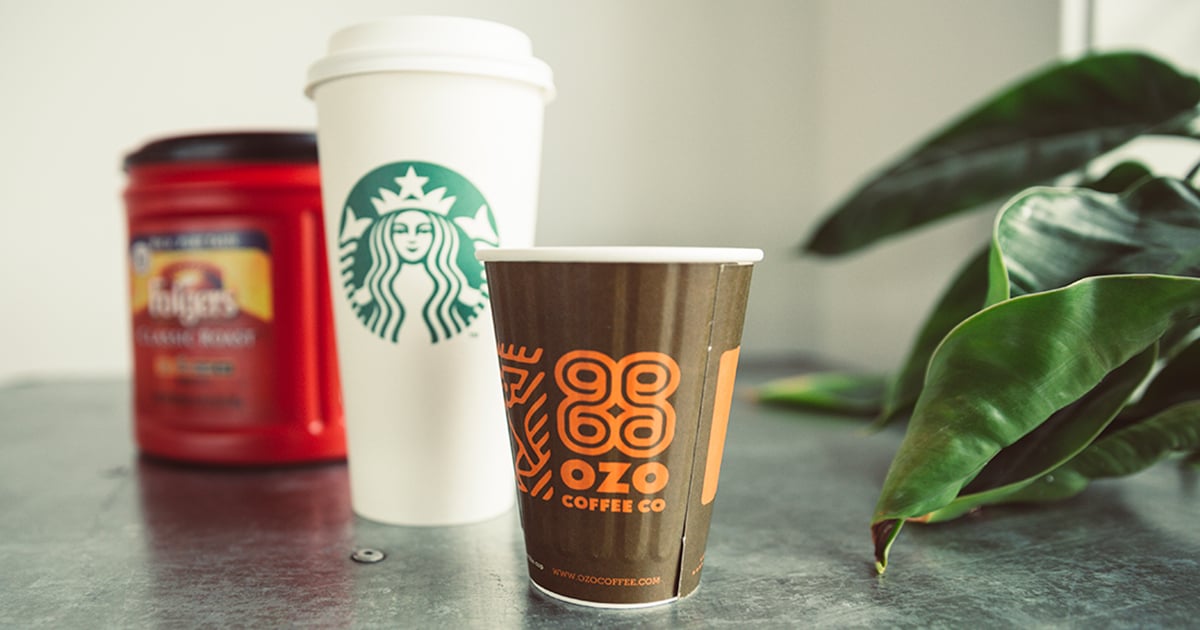May Trend Flight: Salt Therapy, Clean Dental Care, 4th Wave Coffee
[embed]https://www.youtube.com/watch?v=y1hAYhGpW-o&list=PLYhJm5LzkIQDRPmSmYxUM5FZF_PLTO_AP[/embed]
We’re not Salty about the Benefits
Salt therapy or Halotherapy is an emerging wellness trend that consists of heating pharmacy grade salt to 120 degrees and grinding it up into microparticles and releasing it into the air. Like many topical wellness trends, salt therapy is not necessarily new as its origins can be traced back to ancient healing methods. The Wieliczka Salt Mine in Poland for instance, now a tourist attraction and an underground concert venue, was one of the first instances where the healing nature of dry salty air was referenced. The miners who excavated the mine noticed fewer respiratory issues along with other benefits. Salt therapy is said to alleviate a host of ailments like bronchitis, ear infections, sinusitis, sleep apnea, acne, dermatitis, asthma, anxiety, depression and more.
We wanted to experience the betterment first-hand, so we visited Salt of the Earth in Boulder, CO and spoke to the owner, Pamela Martyna, about her journey to healing her asthma (watch above). If you can’t make it to Poland this week, a quick Google search of “Salt Therapy” + “Your local town” should yield results of a facility near you where you can reap the benefits of a three-day beach vacation in just 45 minutes.
Dental Care: This Industry Needs a Cleaning
Every year, more than 50 Empire State Buildings worth of toothpaste tubes end up in landfills or oceans. While they are technically recyclable, the residue is almost always still in the tube even when it’s too empty to use. This residue prevents recycling. Besides, it’s clear from China’s new restrictions on imports that our current recycling process isn’t set for the long haul. Don't worry, there are guides to help us navigate the Wild West of recycling, like this one from Denver's junk removal service, Clutter Trucker.
Toothpaste bits, in plastic-free packaging, reinvent a flawed system. Bite sells toothpaste in a totally new form: a tablet that you chew to break up, and then brush like normal. Your first order comes in a glass bottle, and refills come in compostable packaging. Founders, Lindsay McCormick & Asher Hunt, are conscious of the ingredients that go in their bits, too.
It’s high time this industry got a cleaning. Nearly 22% of young adults avoid the dentist because of how the products taste, according to a survey conducted by Hello Products. Bite is one of many brands revolutionizing the dental space. Others? Quip, with low-profile, user-centered design electric toothbrushes; Cocofloss, floss launched from the trend of coconut oil pulling; Beam Brush, with AR brushing experiences for kids, and insurance plans that match brushing habits for adults; and a myriad of charcoal-infused products.

Fourth Wave Coffee: From Soil to Sip
“More delicious than a thousand kisses, milder than muscatel wine,” Johann Sebastian Bach writes, in his “Coffee Cantata,” from the eighteenth century. “Coffee, I have to have coffee.”
Entire economies rely upon its cultivation and its caffeine content. But is coffee on the brink of a new age? Fourth-wave proponents think so. Before our modern-day soy, bulletproof, and cold-brewed permutations of the beloved elixir, coffee was far simpler. But how did our daily brew get here, and what comes next?
Each “wave” of coffee represents a relatively fundamental change in the relationship between product and consumer. In ~1900 we saw the adoption of coffee into the American lifestyle en-masse; this First-Wave was always about convenience (think tin can with a plastic lid). Then in the 1960s, the rise of the cafe brought us “Italian style” coffees, and thus the espresso bar, the chain cafe—and eventually—Starbucks. Coffee finally started to be recognized for possessing nuanced quality and taste differences. Third-wave (see our April 2018 report on the Third Wave) took this to another level, signaling coffee’s transition to an artisanal luxury product and driving the mindset that coffee is something to be appreciated and enjoyed—a culture of connoisseurship.
So where does that leave us with Fourth-Wave? While there is some debate within the industry as to the exact definition of Fourth-Wave coffee, the cognoscenti seem to all point to one key shift: the cultivation of an ever-deeper relationship with the producer. In practice, this creates a relationship where there are direct reinvestments into specific farmers and their families. Vancouver-based JJ Bean Coffee heavily promotes and showcases its farmers, and their baristas make their way to South America once a year to help build schools and provide tools for farmers to help improve their lives. This dynamic is symbiotic, though, insofar as it enables brands like Sey Coffee to have direct communication with their farmers and make incredibly specific requests such as “we want you to ferment over here in the shade for the first 12 hours, and then over here for 32 hours.”
Currently, over 70% of coffee consumed by the millennial cohort in the US is classified as “quality”; pair that with a willingness to spend more for sustainable sourcing and production, and millennials’ love for artisanal brews could help buoy Fourth-Wave coffee. This represents a gradual but fundamental shift in the coffee landscape, making it possible to fine-tune incredibly precise flavor profiles and produce different varietals and micro-lots from a single grower—all while focusing on the socioeconomic impact of our collective coffee consumption. Fourth-Wave coffee is a marriage between stellar coffee products and truly worthwhile social consciousness.
Get more Food & Wellness Trends here, or sign up for monthly updates!
For media inquiries please email fwt@room214.com
